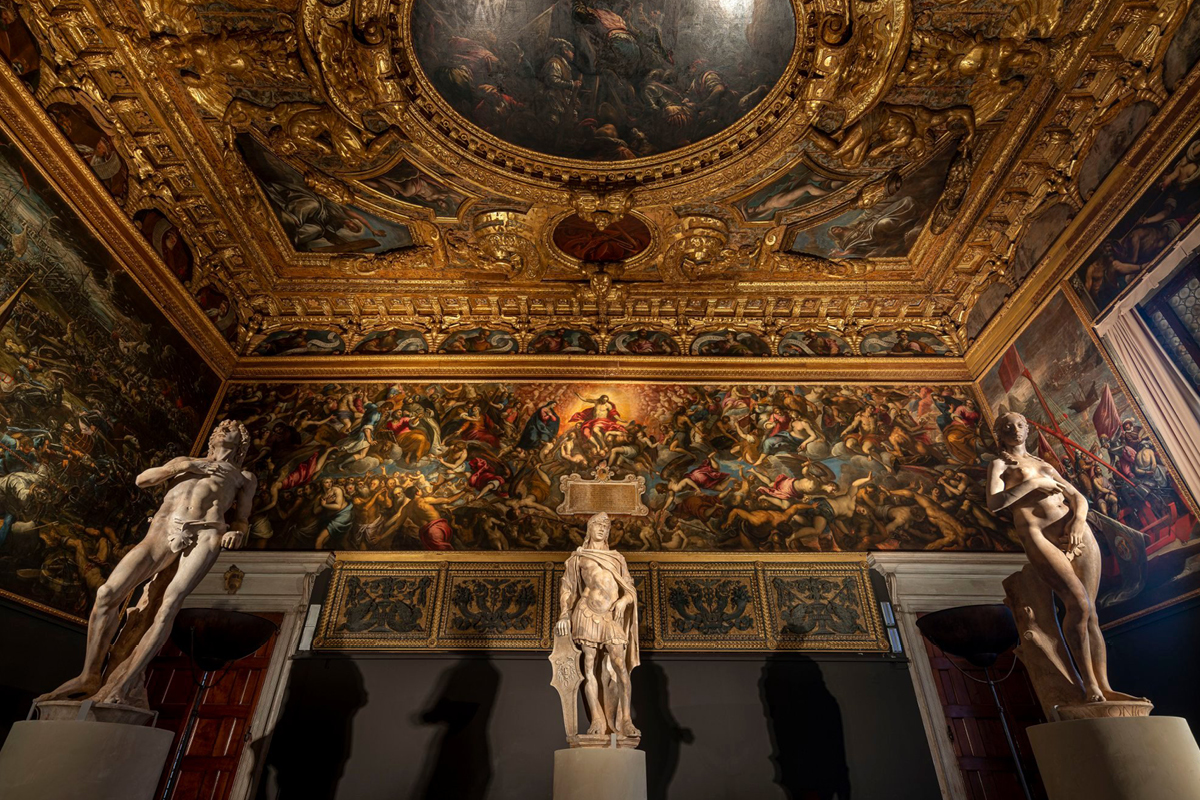“Books live, speak and converse with us, they teach us, they train us, they console us. Without them men would have no memory.” wrote Cardinal Bessarion from Constantinople in a letter to the Doge in 1468, where he explained how he had managed to preserve the great texts from Greek and Latin antiquity, pleading that the Venetian Republic take them, because they were unsafe in Constantinople, since the city was under siege at the time and the books could easily have been burned for ever; he saw Venice as the safest place where no harm could come to them, and where they could live on “for the general good of men”. And so the books arrived, and they were stored here for many decades, in
the Library, which later became the Sala dello Scrutinio where ballots were undertaken in great secrecy during the election of the Doge. The room continued its dual function but book donations kept coming in, and there didn’t seem to be much room for them, moreover the Ballot officers felt they deserved their own room. And so Sansovino, the great Renaissance architect, was commissioned to build the Marciana Library directly opposite the Doge’s Palace, to welcome the increasing number of books that had begun arriving in the city from all the over the world.
In the meantime the wars that had so preoccupied cardinal Bessarion between the Christians of the West and the Ottoman Empire continued, and the victory came for Venice in 1571 at Lepanto, where the Turks were finally defeated.
Rather fittingly, in Lepanto a great book began taking shape in the mind of a Spanish soldier who had fought in the battle himself, but was captured and spent two years in a prison cell, where he used the time wisely and creatively. On his return to Spain, Miguel de Cervantes began writing what was to be the first modern novel in European history, Don Quixote.







